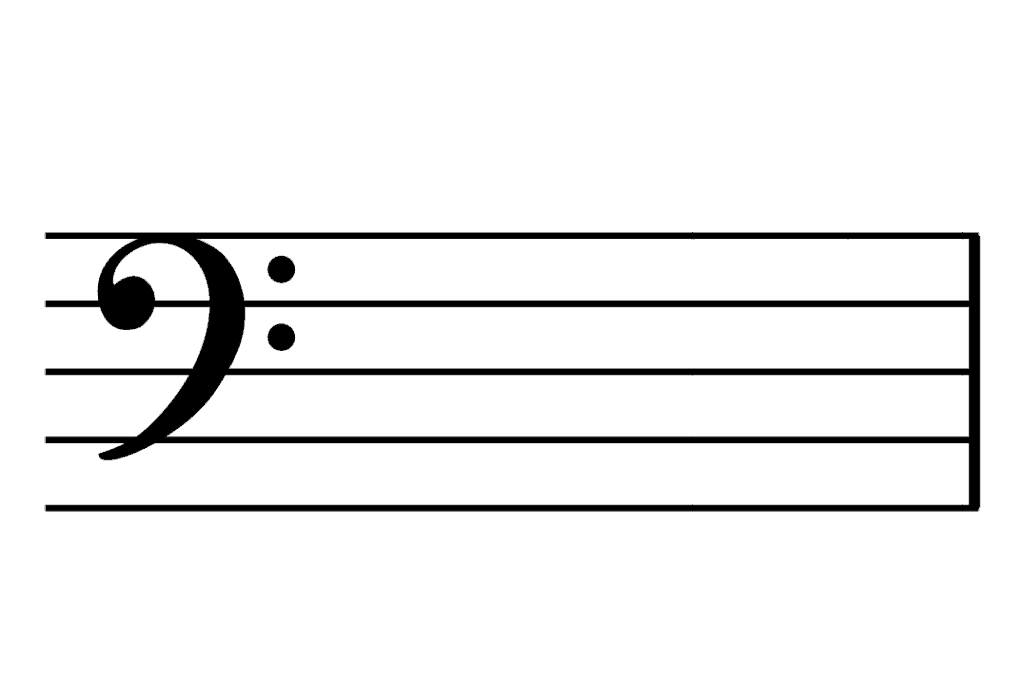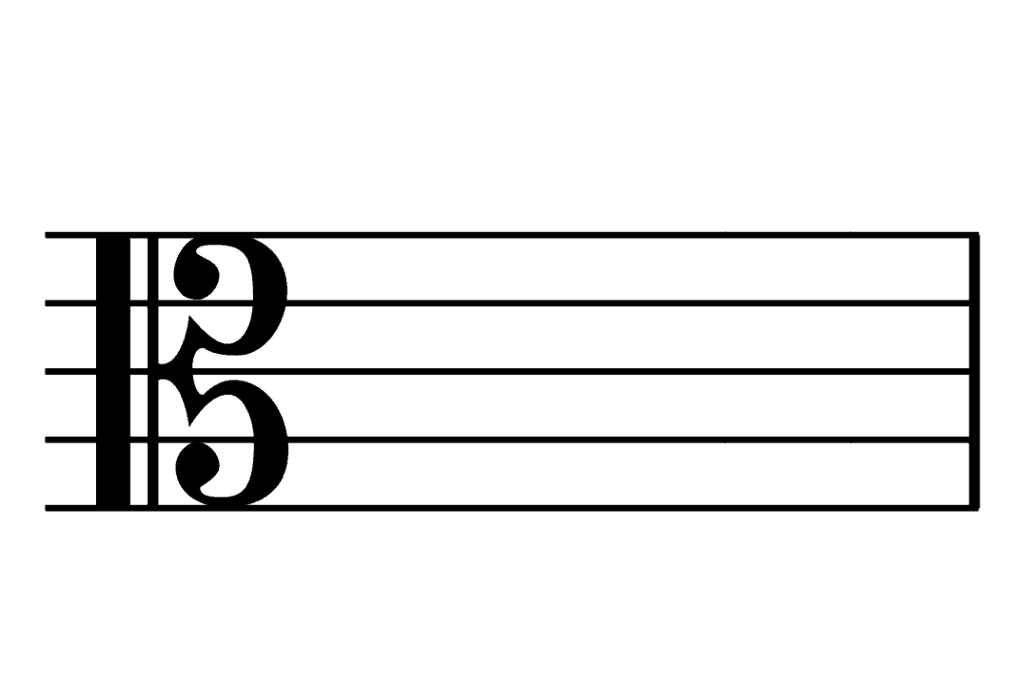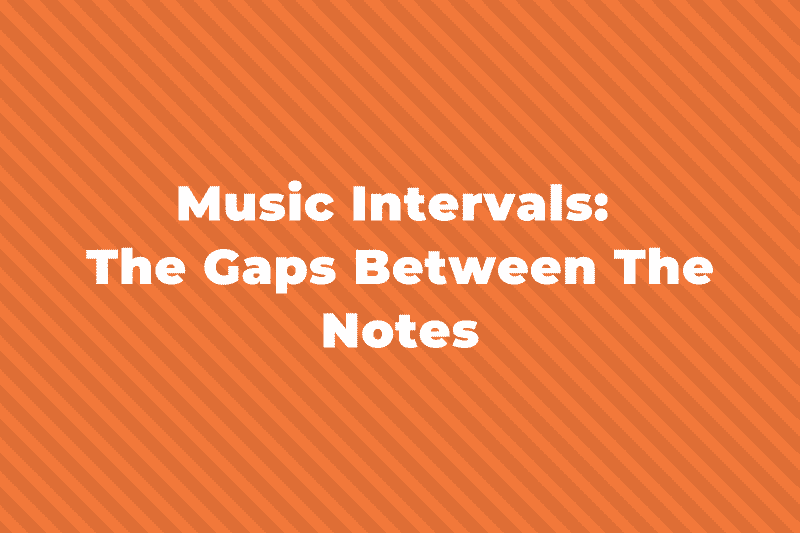Being able to communicate what pitch a note should be is essential for musicians and composers to be able to read and write music. If we couldn’t explain which note was which, we wouldn’t be able to share melodies or songs by writing them down.
In this post, we’ll be looking at music clefs, which are ‘the key’ to being able to know which note is which. Let’s get started.
What is a Clef in Music?
In music, a clef is a musical symbol that indicates what pitch a note should be.
There are a huge range of different pitches available and clefs tell us which note is represented by each space and line of the stave.
Different Types Of Clefs
There are lots of different types of clef but the most common ones are:
- The treble clef
- The bass clef
- The alto clef
- The tenor clef
The majority of instruments will use one or more of these clefs to read music but there are some others that we’ll look at too.
The Treble Clef

The treble clef is one of the most common and recognizable types of clef used to indicate the pitch of notes.
It’s also known as the G clef as it shows us where the note G is on the stave.
It’s called the G clef because it loops and wraps itself around the note G on the stave.

How to Draw a Treble Clef
To draw a treble clef you have to find the second line from the bottom of the stave to start.
Here’s a video from Essential Music Theory to explain what to do.
Treble Clef Notes
Because we know that the treble clef wraps itself around the note G, we can then work out what all the different notes are on the stave.
Going up from G we have all these notes:

And going down from G we have these notes:

For more information, check out our overview of the treble clef here.
The Bass Clef

Here we have another type of clef called the bass clef.
The bass clef is also known as the F clef because it loops and wraps itself around the note F on the stave.

How to Draw a Bass Clef
Here’s a video explaining how to draw it.
Don’t forget the two little dots on either side of the 2nd line of the stave.
What are the Notes on the Bass Clef?
Going up from F we have the following notes:

And going down from F we have these notes:

Read more in our guide to the bass clef here.
The Alto Clef

Now, we’re going to take a look at another type of clef called the Alto clef.
The alto clef, also called the viola clef, looks like a capital letter B and sits right in the middle of the stave.
Although it looks like an uppercase letter B, it’s actually what we call a C clef because the middle of the arches shows us where middle C is on the stave.

Alto Clef Notes
Here are all the letter names of the notes in the alto clef:

Here’s a video from Music Matters going over how to read notes in the alto clef:
You can read more about the alto clef here.
The Tenor Clef

The last of the four common clefs is called the tenor clef.
Like the alto clef, it’s a type of C clef as the middle of the arches shows us where middle C is on the stave.

Tenor Clef Notes
Again, now that we know where C is in the tenor clef we can work out the other notes. Going up from C we have these notes:

And going down from middle C we have these notes:

Click here for more information on the tenor clef.
Other Types Of Clef
As well as the four clefs above there are some others that are less common or used for very specific things.
The Baritone Clef

The baritone clef is another type of F clef.
But, instead of being written like the bass clef – wrapping around the second line of the stave, it sits a bit lower down wrapping around the third line of the stave.
SATB – Open score

When writing for or singing in a choir you might see a score like above which is SATB.
SATB stands for soprano, alto, tenor, bass – the four voices common in choirs.
The top stave is sung by the soprano, the second by the alto, the third, the tenor, and the fourth by the bass.
You might notice that the tenor part has a number eight below the treble clef.
This indicates that the actual pitch should sound an octave below.
Summing up Clefs
Clefs are an essential part of music theory and while you may not need to know about clefs that your instrument doesn’t use it’s still very useful to know about them, especially if you begin to write for other instruments.
Next, I’ll be adding to this post with some of the other types of clef like the grand staff, reading guitar tab, and the percussion clef. Check back soon for an update.



